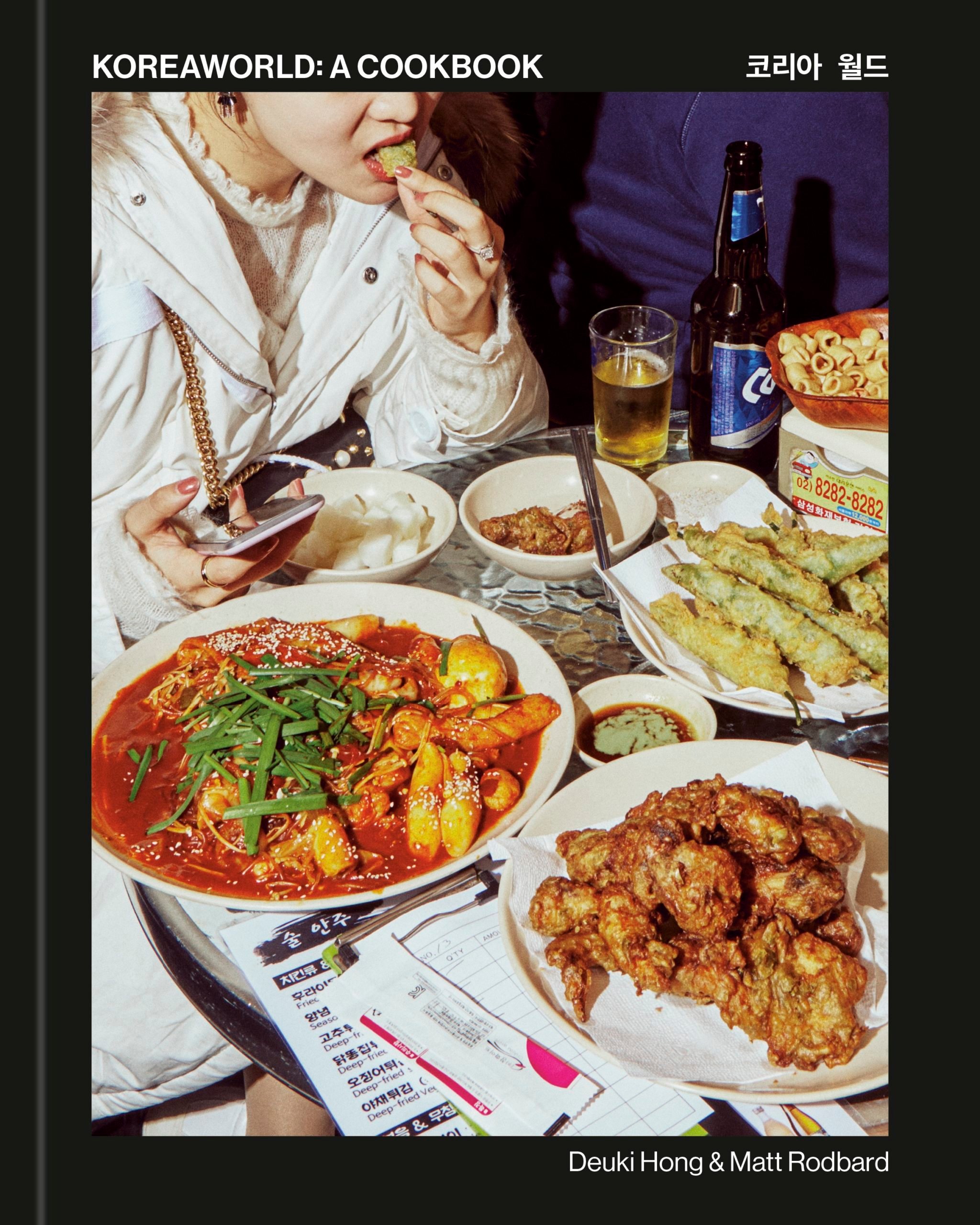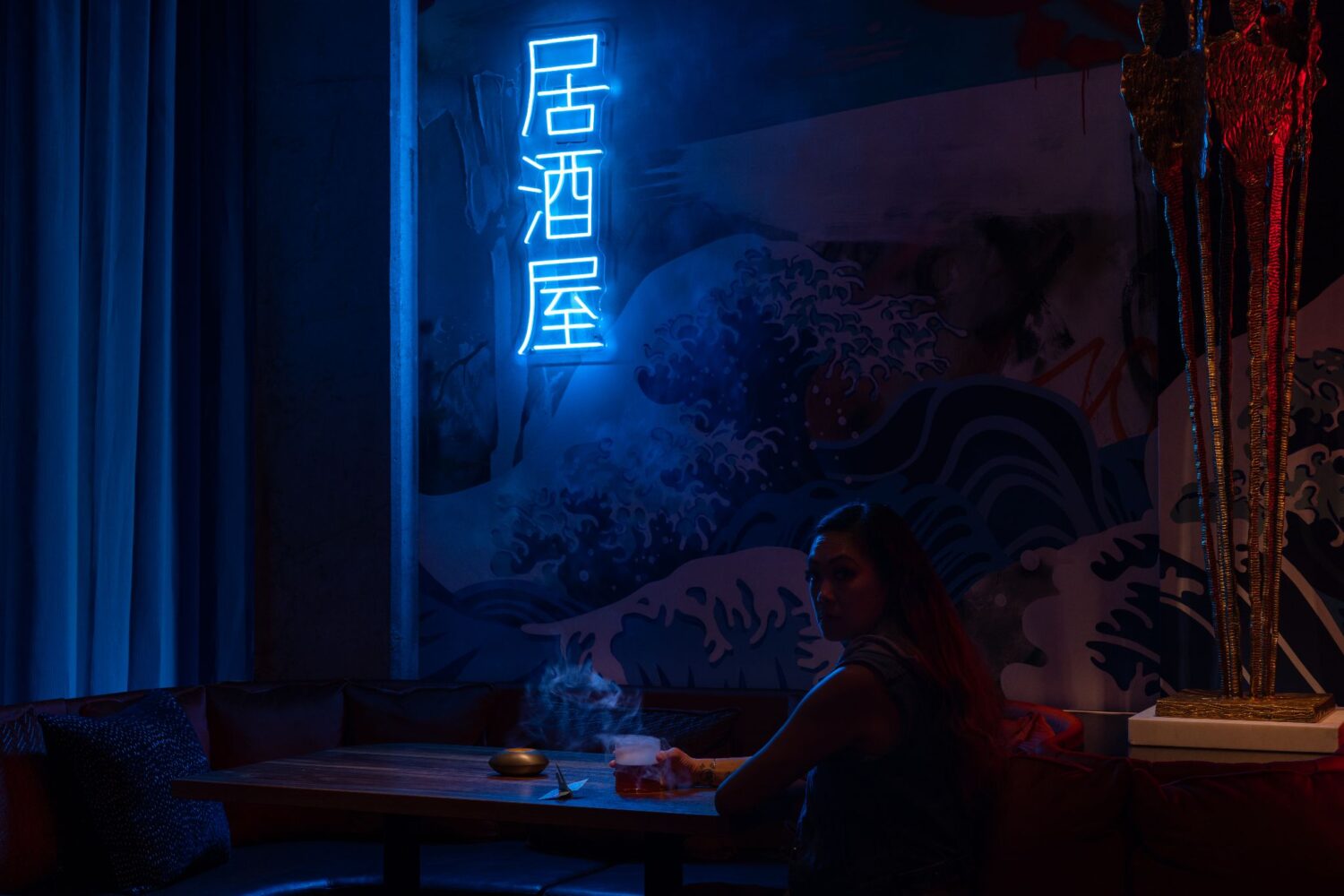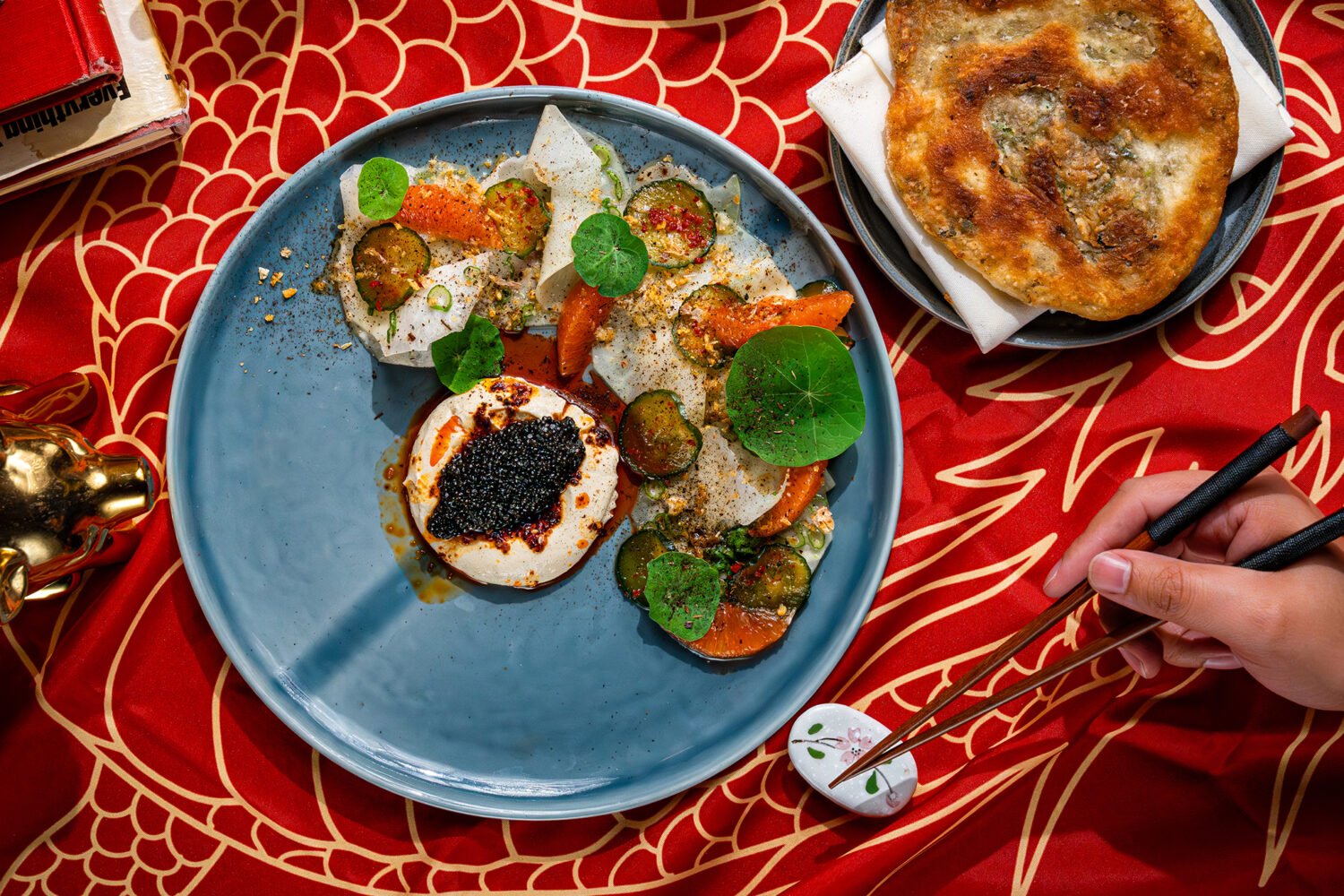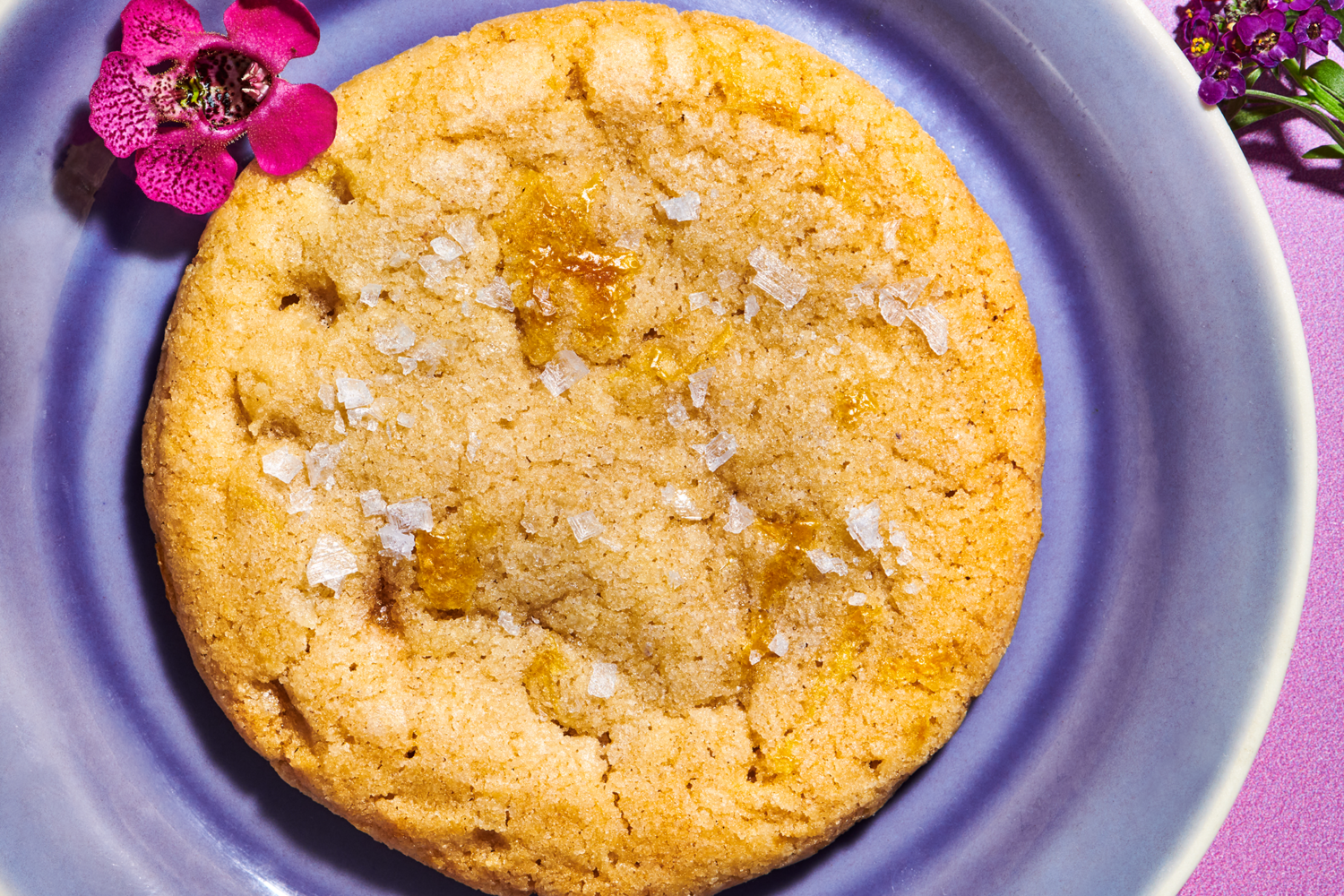Journalist Matt Rodbard and chef Deuki Hong have spent a good part of the past decade documenting Koreatowns and Korean cooking across the country. They published their first cookbook, Koreatown, in 2016. Now, they’ve released Koreaworld, a sequel of sorts that delves into modern recipes and stories both from South Korea and across the US. Think spicy fried chicken with baby anchovy and crispy lotus root, grilled kimchi wedge salad, and gochugaru caramel corn.
Of course, no conversation on the topic is complete without talking about Northern Virginia, which is home to one of the largest Korean populations in the country—but also DC, home to boundary-pushing restaurant Anju. (The authors declare Anju’s lightly battered and fried branzino “one of the all-time favorite Korean dishes we encountered while traveling around the United States.)
We spoke to Rodbard about the shifting landscape of Korean dining and some of his favorite local Korean spots below. And if you want to try the food without the cooking, the authors are hosting a cookbook club dinner with the chefs of Anju at Capitol Hill restaurant I Egg You on Friday, April 26. Tickets available here.
What was your approach to this book, and how does it compare to what you did in Koreatown?
The first book was kind of like the canon. It was a lot of classic recipes—recipes that we felt needed to be in a book. We were one of the first Korean cookbooks to break through. [With Koreaworld,] we really figured that the modern Korean scene in both Korea and in America—and there’s some transition of energy between the two—was the best approach. We call the second part of the book “The New Koreatown,” which in Washington, DC, you’ve seen dramatic changes in the dynamic. It’s not just Annandale—it’s [Anju chef] Angel Barreto doing his amazing work and what’s happening throughout the city.
How much has Korean food across the country actually changed in the years since your last book came out?
One key thing is geography. In New York and LA in particular, it’s not just 32nd Street or Koreatown in LA. In New York, there’s a whole pocket of restaurants in Flat Iron, there’s restaurants in the East Village. In LA, now there’s restaurants downtown. One of the most exciting Korean restaurants is not in a Korean neighborhood, but in Washington, DC proper.
The other [change] is we have a real vocabulary now as a diner. It’s not just like ‘Korean food is barbecue.’ When we first wrote the book in 2016, it was all about this new idea: Japan has had this long time in our zeitgeist, and now it’s Korea’s turn. Ten years later, Korean food has certainly arrived. The IQ of the diner so much greater.
For the DC area specifically, tell me a little bit about what your research involved?
We spent a good amount of time with Danny Lee from Mandu. Danny is somebody who I think is really important, because he’s really done the work. He’s really somebody who I feel has become a mentor to many in the country, not just obviously the East Coast. I’ve seen him at the James Beard Awards, and Danny has people around him from all over America in Korean circles.
We went to Juk Story [a cafe serving Korean rice porridge in Annandale], and we got a little bit of Annandale in the book. Angel Barreto is in there too. Angel is somebody who is really unique in that he’s not Korean American, but he has this fluency in the cuisine unlike anyone I know. His food is so good.
In the book you write about Anju actually changing the way Americans view Korean food.
The idea of “anju” was drinking food, right? You think of soju, you think about barbecue. But what Angel is doing there is not relying on this tried and true method of anju. He’s making anju this a creative endeavor and not just this idea that it’s a way to sell alcohol. He’s really redefining what anju is.
Can you talk a little bit about the recipes you featured from Anju?
I thought the corn jeon [a crispy, cheesy corn pancake with seasoned onion salad] was really special in that it was very out of the box. Corn is not something you see a lot in Korea. It’s not grown in Korea. It’s not really a native produce. It’s very much Angel. [The recipe is] kind of like his version of arepas, but he does it very Korean, especially with the onion salad with sesame. It sneaks in a lot of Korean flavor profiles, like scallions and ginger.
How does Northern Virginia’s Koreatown compare to others that you visited? Is there anything in particular that you found unique about what’s going on in this region?
My impression is Northern Virginia has one of the more historical Korean-American communities in the country. Chicago used to have it, but everyone’s left and moved way out in the suburbs and dispersed. Atlanta’s also experienced a little of that. Northern Virginia has remained. It felt like it had been expanding, but it didn’t feel like it was any different. Like Juk Story feels like it’s ripped out of the 1990s. That’s what you tended to see a lot in LA and in New York back in the early 2000s.
Were there other places you explored in Annandale that you were excited about but maybe just didn’t make the book?
To Sok Jip. It’s a ‘jip,’ which is a house, and it’s exactly what it says it is. It’s a homey restaurant. In our travels, you just don’t find that in LA and definitely you don’t find in New York. And I thought the food was really good. I remember we had bossam [boiled pork with cabbage wraps]. I remember we had some jjigaes [stews] that were good. I would so go there a lot if I lived locally.
[At Shilla Bakery], I met the second generation owner. It’s a really classic story in Korean communities, having a second generation restaurant. The range of cakes they’re doing there—the layer cakes and the slices of cake wrapped in plastic—and the yeast buns, and there’s bingsoo there too. This is one of those things that I think you might not realize you have in Annandale, but it’s a really unique thing that is being lost in a lot of Korean communities.
This interview has edited for length and clarity.


















